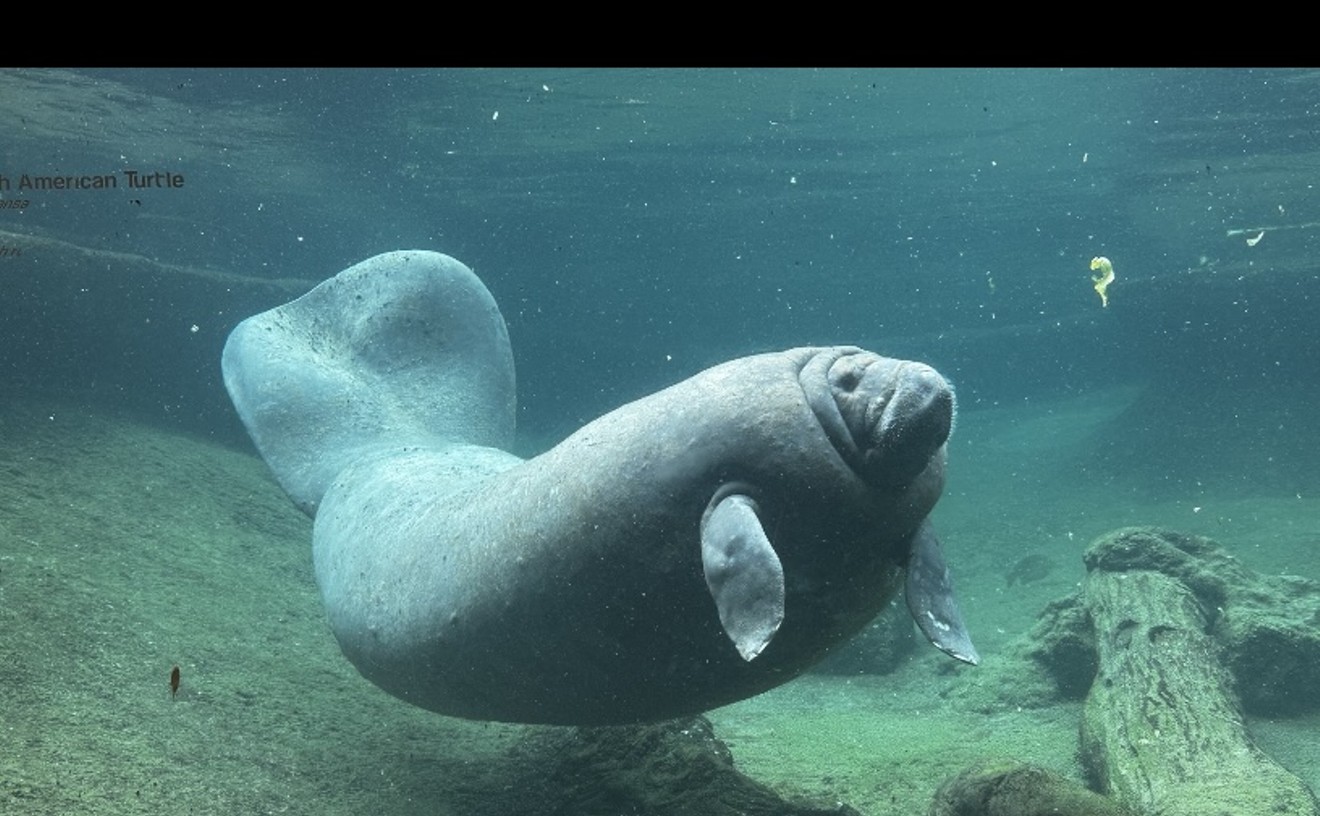One of Miami’s most treacherous roads may get a serious safety upgrade, in the form of a ten-foot protected path for use by cyclists and pedestrians.
The Julia Tuttle Causeway, a six-lane divided freeway (part of Interstate 195) that connects midtown Miami and Miami Beach, posts a speed limit of 55 mph and has been the scene of plenty of deadly accidents over the years. In April of last year, 25-year-old Eber Vasquez was killed near the western section of the highway when a speeding car swerved into his bicycle from behind, sending him and his bike into the water.
“We’ve gotten a lot of requests for a protected path,” says Zak Lata, the FDOT bicycle and pedestrian coordinator for District 6, which includes Miami. “We’ve come to realize we really need to address every mode of transportation — not just cars. Mixing high-speed traffic with bicycles is intimidating, and there should absolutely be a barrier.”
Most cyclists and pedestrians crossing between Miami and the mainland prefer the Venetian Causeway, which is by far the slowest and safest bridge. Actually, prior to 2012, biking and walking were banned on the Tuttle. But in 2012, the Florida Legislature created a pilot program permitting and accommodating bikes there. It threw down some paint on the pavement and erected bike lane signs, but there were no barriers installed.
Crossing the Tuttle by bike or foot is harrowing at best. Cars regularly reach 70 mph and switch erratically between lanes. Last year, when the Venetian Causeway was closed for repairs for nine months, many cyclists and pedestrians had no choice but to take the Tuttle to cross between the beach and the mainland.
Lata, who was hired by FDOT in 2013 in an effort to increase bicycle and pedestrian safety, has been working to make Miami-Dade’s streets more “complete,” with better accessibility and safety for all users.
He says the future Tuttle shared-use path, which is still in the conceptual planning stage, would be ten feet wide with a barrier between the outside of the road and the travel-way. After preliminary research, Lata says FDOT has determined the plan is feasible.
For Miami’s cyclists, increased safety measures could not come soon enough. The county remains one of the nation’s least safe cities on two wheels. But, given the long lead-time on many transportation projects, the new barriers likely won’t appear anytime soon. “It could take a while,” Lata says.
[
{
"name": "Air - MediumRectangle - Inline Content - Mobile Display Size",
"component": "19274298",
"insertPoint": "2",
"requiredCountToDisplay": "2"
},{
"name": "Editor Picks",
"component": "17482312",
"insertPoint": "4",
"requiredCountToDisplay": "1"
},{
"name": "Inline Links",
"component": "18711090",
"insertPoint": "8th",
"startingPoint": 8,
"requiredCountToDisplay": "7",
"maxInsertions": 25
},{
"name": "Air - MediumRectangle - Combo - Inline Content",
"component": "17482310",
"insertPoint": "8th",
"startingPoint": 8,
"requiredCountToDisplay": "7",
"maxInsertions": 25
},{
"name": "Inline Links",
"component": "18711090",
"insertPoint": "8th",
"startingPoint": 12,
"requiredCountToDisplay": "11",
"maxInsertions": 25
},{
"name": "Air - Leaderboard Tower - Combo - Inline Content",
"component": "17482313",
"insertPoint": "8th",
"startingPoint": 12,
"requiredCountToDisplay": "11",
"maxInsertions": 25
}
]










